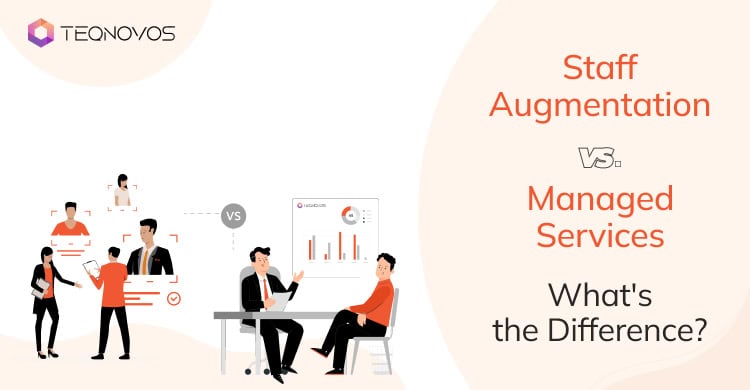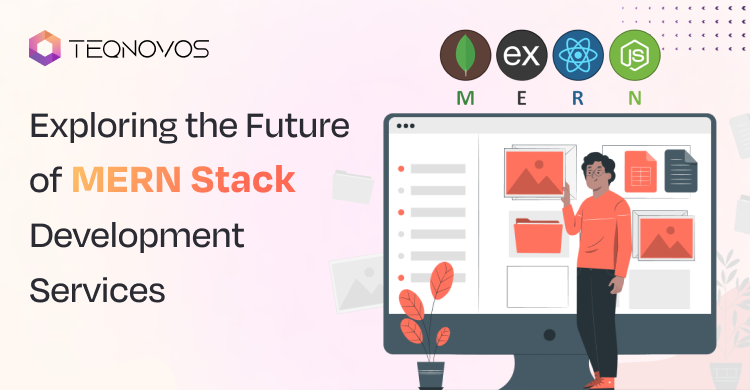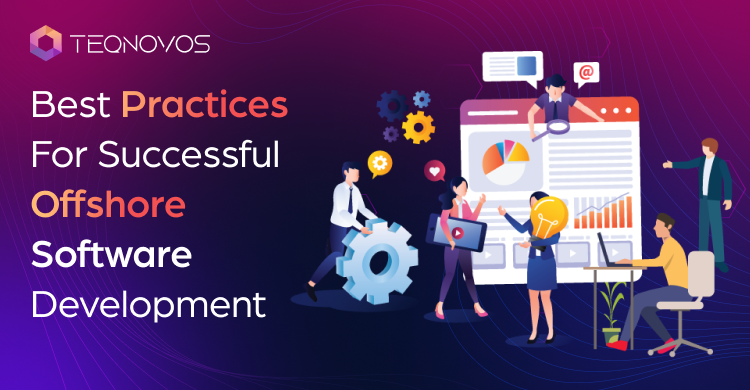Staff Augmentation Vs. Managed Services: What’s the Difference?
The impact of remote hiring models like outstaffing is spread across industries including the information technology sector. Today, businesses across the globe can hire top-class IT professionals from anywhere to work on their software development projects remotely.
But if you want to make the most of remote hiring, make sure you know all about staff augmentation vs managed services. Both these concepts are associated with remote hiring and are often interchangeable which leads to confusion.
In this blog, we will help you understand the difference between staff augmentation and managed services in detail. Learn about the differences now, and make your choice wisely.
What is Staff Augmentation?
As the name suggests, staff augmentation is the process of hiring temporary staff to meet your business’s short-term goals. It is a hiring strategy where you get to bring in highly qualified and experienced IT experts to work on your project under your management.
Staff augmentation helps business leaders bring in the best talent for a particular job without making a long-term commitment. Additionally, it helps employers save a decent amount of money associated with permanent hiring such as employee benefits.
With IT staff augmentation, you can hire software developers for any stage of the development process. Whether you need a software tester, coder, etc. you can bring in a suitable IT expert anytime. Thus, staff augmentation is known to make hiring more hassle-free and effective.
Staff augmentation is an ideal option for short-term projects that don’t require much assistance from the developers in the future.
Top Benefits of Staff Augmentation
Go through some of the main benefits of staff augmentation that make it a stand-out remote hiring model.
1. Complete Control
When you hire remote software developers through IT staff augmentation, you get to establish full control over the hired employees. It is so because, in this model, you augment your in-house team by hiring remote developers to work with you.
Therefore, in staff augmentation, you have full control over the remote experts and can delegate tasks as you want.
2. Cost-Effectiveness
By hiring remote IT experts from anywhere in the world, you save significantly. Staff augmentation saves you money on operational costs and hiring expenses. You don’t have to worry about infrastructure, internet, and all the related costs that come with in-house hiring.
Besides, when you hire experienced developers from a country with lower labor costs, you get top-notch services at great prices.
3. Faster Recruitment
Unlike in-house hiring, the staff augmentation process is quite fast. You simply reach out to an outstaffing company, choose professionals, and bring them on board. Faster recruitment means a greater chance of completing your development project on time to meet the customer’s needs.
When you hire through the traditional method, a lot of time is used to find suitable IT resources locally. You can save this time with staff augmentation services as you hire remotely.
What is Managed Services?
Like staff augmentation, managed services also involve seeking help from remote professionals to meet your software development requirements. However, in managed services, businesses hand over their IT processes to an outside software development company.
The managed service provider also known as MSP is a third-party operator who usually offers long-term support. Some of the key functions that managed services include are security, backup recovery, cloud infrastructure maintenance, and more.
The prime purpose of hiring an MSP is to reduce the need for overhead resource managers in your workplace. You can simply get in touch with a reliable managed service provider and they will take care of your everyday processes for you.
When you hire an MSP, they will give you an estimated timeline for the assigned work to be done and take over the project entirely.
Top Benefits of Managed Services
If you are in a dilemma trying to decide whether to opt for managed services or not, check out some of its top benefits below.
1. No Training Required
By choosing managed services, you can eliminate the hassle that comes with training your employees. The company from which you seek managed services will train their experts themselves, allowing you to simply benefit from their expertise.
Not having to take responsibility for training software developers doesn’t just save your time, but also ensures cost-effectiveness.
2. Focus on Core Business Processes
When you hand over your software development project to a managed service provider, you free yourself up for other important things. Since managed services don’t demand your active involvement, you can invest your time and energy in other core business processes.
This is why managed service is an ideal choice of hiring model for you if you don’t have the time to monitor a development project yourself.
3. Enhanced Risk Management
Every software development project that a business takes on involves a bit of risk. However, you can minimize that risk by hiring managed service providers for your projects. These are expert professionals who follow the best practices to help you meet your goals risk-free.
As you partner with reliable MSPs, they will guide you in the best way and help eliminate security and other risks.
Managed Services Vs. Staff Augmentation: Understanding the Differences
Here is a comparison table between managed services and staff augmentation to help you better understand their differences.
| Parameter | Staff Augmentation | Managed Services |
| Purpose | Providing remote IT support for short-term projects. | Providing remote IT support for long-term projects. |
| Billing | Billed as per the time spent on the project. | Billed as per the contract, usually annually. |
| Management | Managed by the hiring party. | Managed by the service providers only. |
| Security | Relatively fewer security concerns as less information is shared with a third party. | Relatively higher security concerns as sensitive information is shared with a third party. |
| Scalability | Higher scalability as it allows businesses to hire experts when needed. | Less scalable as it doesn’t allow hiring individual experts as required. |
Staff Augmentation Or Managed Services: What to Choose?
Staff augmentation vs. managed services is a debate that has been around for a while. And if you are a business owner looking to hire remote IT professionals, you need to know about it.
But once you learn about these two hiring options, you might be confused about which one to go for. This is where it becomes important to understand that both these hiring strategies are suitable for different requirements. Choosing one of these is solely dependent on your needs.
For example, if you need a flexible short-term hiring solution, you can go for staff augmentation. But if you want long-term support for your IT project, you can choose managed services. Just make sure, regardless of the method you choose, hire from a well-established company.
To Sum It Up
Remote hiring models have a big role in play in the current IT sector, especially with the increasing shortage of talent. However, choosing the right hiring strategy at the right time becomes crucial if businesses want to make the most of flexible hiring.
Staff augmentation vs. managed services is also an essential part of knowing which hiring model to choose. Both these models are great hiring options, so the sooner you learn their differences, the better. We have covered all the major differences between them in this blog.
If you have decided to build your team of software engineers through staff augmentation hire from Teqnovos. We are a reputed outstaffing company with well-trained and experienced IT professionals available for you to hire. Get in touch with us, and let’s discuss your project now.
Frequently Asked Questions
1. What is staff augmentation?
Staff augmentation is a well-known remote hiring model that allows business owners to hire temporary IT experts to work with. Through this model, you can bring in the best software developer with specific specialization to meet your project demands. This method is usually ideal for short-term tasks which is when you can hire developers as needed and let them go once the work is done. It is one of the most cost-effective and highly scalable hiring methods.
2. Who are managed service providers?
In the managed service model, businesses hand over their software development project to an outsourced company. The managed service providers, on the other hand, are experienced and skilled IT professionals who take care of every aspect of the development process. They are experts who handle long-term operations in an IT project and free up the employer’s time to focus on other important things.
3. How is staff augmentation different from managed services?
In staff augmentation, you get to hire expert remote developers to work in collaboration with your in-house team. Whereas, in managed services, you give away your entire development project to an outside company with its own team and project manager. You can opt for staff augmentation when you need an IT professional for a specific project on a short-term basis and managed services for long-term support.
4. Is staff augmentation better than managed services?
When it comes to staff augmentation vs. managed services, and determining which is better, there might not be one right answer. Both of these models are ideal for different purposes. With staff augmentation, you strengthen your in-house team by hiring remote professionals. On the other hand, with managed services, you trust an outsourced development team to handle a software development project. However, given how popular custom software development is, businesses might benefit more by augmenting their onsite IT team instead of giving away the project.
















